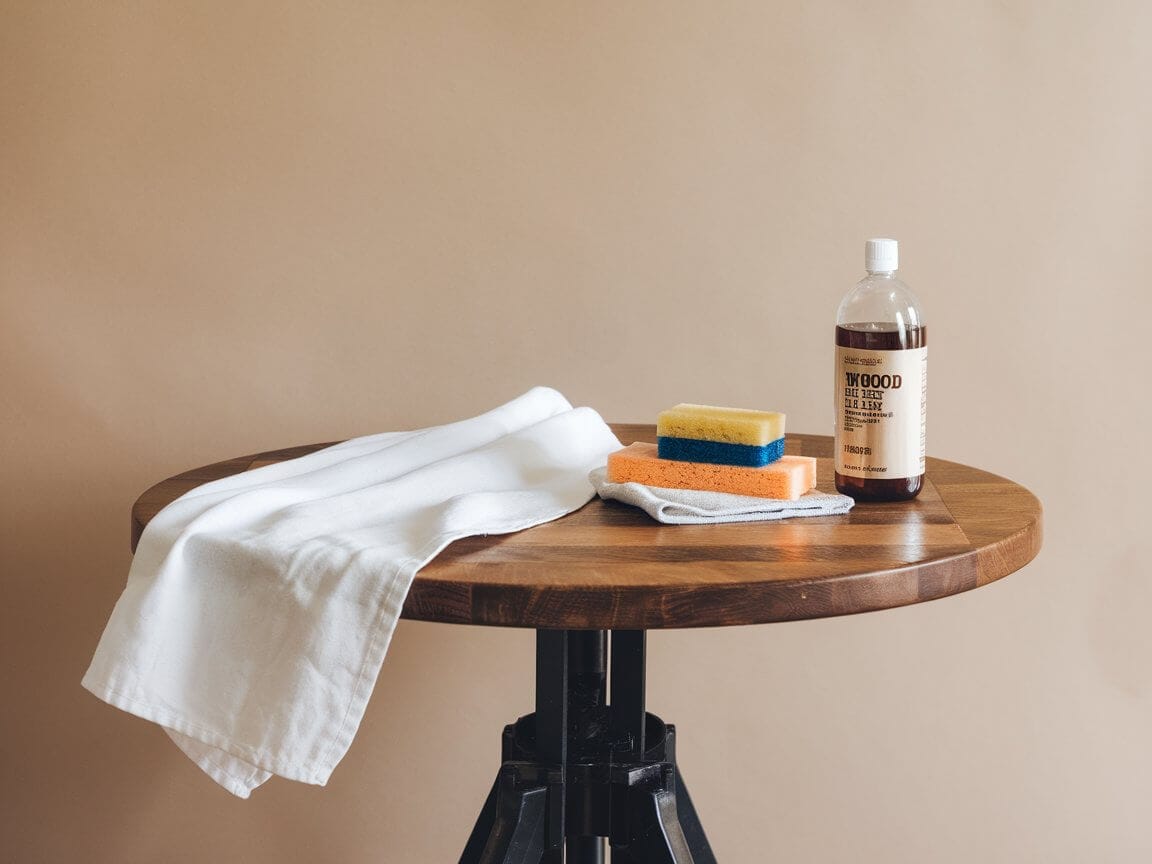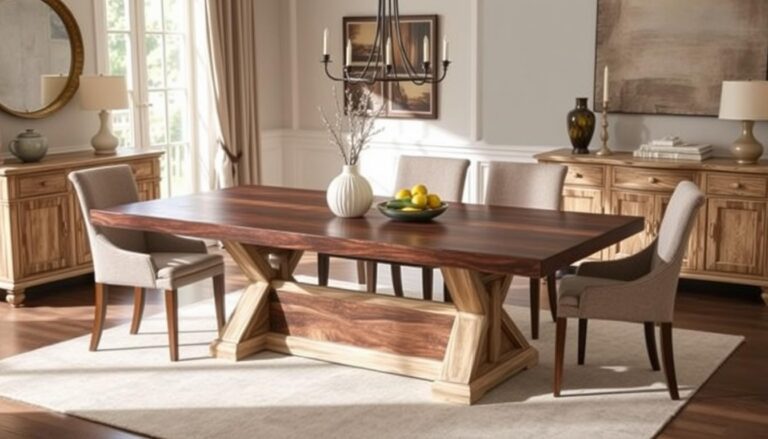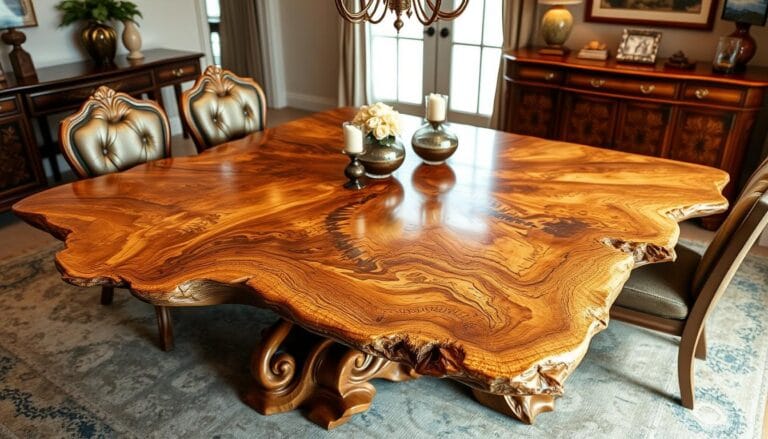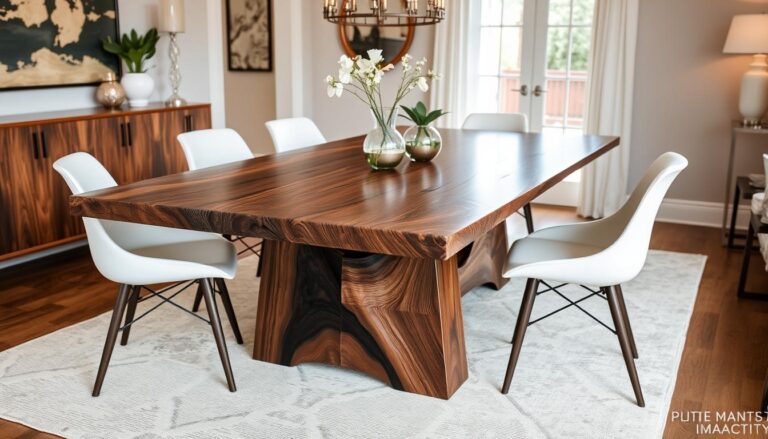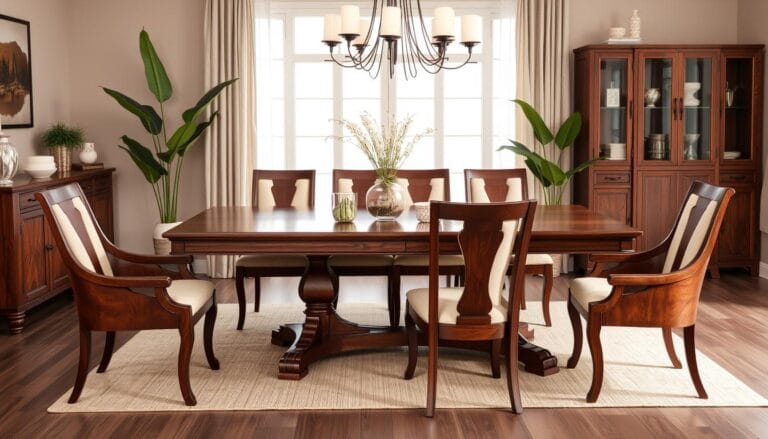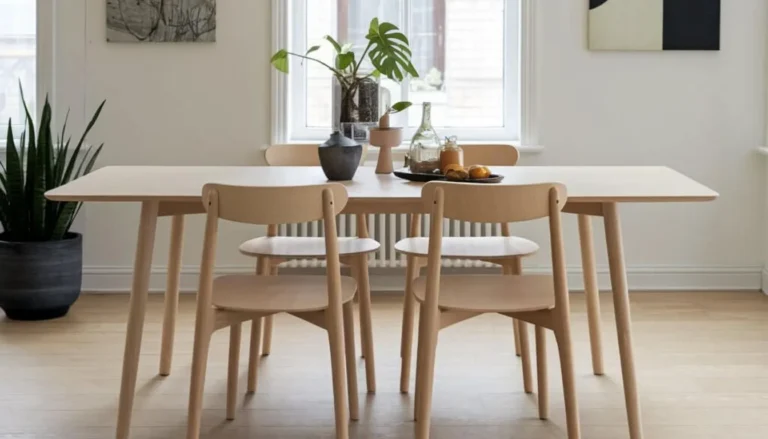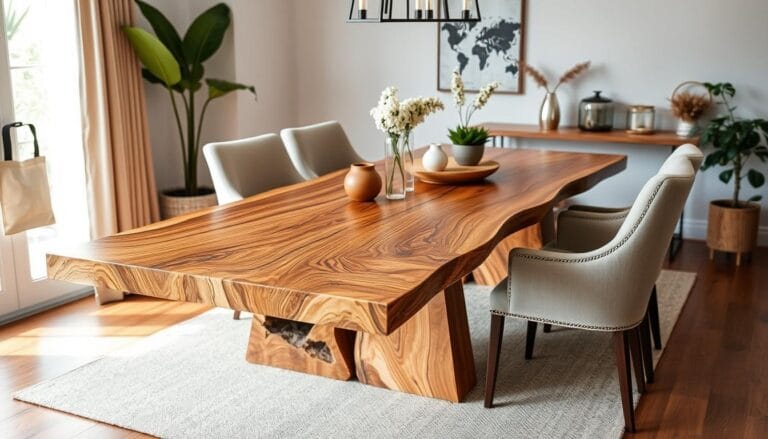How to Clean a Wood Table: A Step-by-Step Guide
Table of Contents
Learn How to Clean a Wood Table Effectively: Discover the best cleaning methods to maintain your wood table’s beauty. Remove stains, prevent watermarks, and protect its finish with our expert tips. Keep your wooden table looking its best for years to come.
1. Understanding Your Wood Dining Table
1.1. Types of wood used in dining tables
Hey there, fellow wood table lovers! Let’s chat about the different types of wood you might find in your dining table. Oak, maple, cherry, walnut, and mahogany are some popular choices. Each has its own unique grain pattern and color. For example, oak is known for its durability and prominent grain, while cherry offers a warm, reddish hue that deepens over time. I remember when I first got my oak dining table – I was amazed at how the grain seemed to tell a story!
1.2. Identifying your table’s finish
Now, let’s figure out what finish your table has. Most tables have either a varnish, lacquer, or oil finish. Here’s a simple test: put a drop of water on an inconspicuous spot. If it beads up, you’ve got a varnish or lacquer finish. If it slowly spreads, it’s likely an oil finish. I once thought my table had a varnish finish, but this little test showed me it was actually oil-finished!
1.3. Assessing the current condition of your table
Take a good look at your table. Are there scratches, water rings, or dull spots? Don’t worry – we’ve all been there! My table has seen its fair share of spills and scratches from family dinners. Knowing the current condition helps you decide what kind of TLC your table needs.
2. Gathering Essential Cleaning Supplies
2.1. Gentle cleaning solutions for wood
For everyday cleaning, warm water with a bit of dish soap works wonders. For a deeper clean, you might want to try a specialized wood cleaner. I’ve found that a mix of equal parts white vinegar and olive oil does a great job too. Just remember to always test any new solution on a hidden spot first!
2.2. Microfiber cloths and soft brushes
Microfiber cloths are your best friends when it comes to cleaning wood. They’re gentle and don’t leave lint behind. Soft-bristled brushes are great for getting into carved details or textured surfaces. I keep a stash of microfiber cloths just for my table – no mixing them up with other cleaning rags!
2.3. Protective products for wood surfaces
Consider getting a good quality wood polish or wax to protect your table after cleaning. There are also products designed to fill in small scratches. I like to use beeswax – it gives my table a lovely sheen and smells great too!
3. How to Clean a Wood Table : A Regular Cleaning Routine
3.1. Dusting techniques for daily maintenance
A quick daily dusting goes a long way in keeping your table looking great. Use a soft, lint-free cloth or a feather duster. Always dust in the direction of the wood grain. I make it a habit to dust my table every morning while my coffee is brewing – it’s become a nice little ritual!
3.2. Wiping down the table after meals
After each meal, give your table a quick wipe with a damp cloth, then dry it immediately with a clean, soft cloth. This prevents spills from setting in and keeps your table looking fresh. Trust me, this simple habit has saved my table from many potential stains!
3.3. Addressing spills and stains promptly
If something spills, don’t panic! Blot (don’t rub) the spill immediately with a clean, dry cloth. For sticky spills, use a damp cloth, then dry thoroughly. I once spilled red wine on my table and thought it was ruined, but quick action saved the day!
4. Deep Cleaning Your Wood Dining Table
4.1. Preparing the table for deep cleaning
Before deep cleaning, remove all items from the table and dust thoroughly. If your table has leaves, remove them and clean separately. I like to do this on a sunny day so I can really see all the areas that need attention.
4.2. Applying and working with wood cleaners
Apply your chosen wood cleaner with a soft cloth, working in the direction of the grain. Don’t saturate the wood – a little goes a long way. For stubborn dirt, you might need to use a soft brush. The first time I deep cleaned my table, I was amazed at how much dirt came off!
4.3. Rinsing and drying the table properly
After cleaning, “rinse” by wiping with a damp cloth to remove any cleaner residue. Then, immediately dry with a clean, soft cloth. Make sure to get into all the nooks and crannies. I usually go over the table twice just to be sure it’s completely dry.
5. Removing Stubborn Stains and Marks
5.1. Treating water rings and heat marks
For water rings, try rubbing with a mixture of equal parts white toothpaste and baking soda. For heat marks, a little mayonnaise left on overnight can work wonders. Sounds weird, I know, but it really works! I’ve saved my table from both types of marks using these methods.
5.2. Addressing ink and paint stains
For ink stains, try dabbing with a cloth dipped in milk or saliva (yes, really!). For paint, a little mineral spirits on a cloth can help, but be gentle. Always test in an inconspicuous area first. I once got pen ink on my table and the milk trick saved me from a lot of stress!
5.3. Dealing with scratches and dents
For light scratches, try rubbing with a walnut half – the oils can help hide the scratch. For deeper scratches or dents, you might need wood filler. I’ve used the walnut trick several times, and it’s like magic watching the scratch disappear!
6. Polishing and Protecting Your Table
6.1. Choosing the right wood polish or wax
Choose a polish or wax that’s appropriate for your wood type and finish. Natural waxes like beeswax are great for most woods. I prefer paste wax for my table – it gives a deep, long-lasting shine.
6.2. Applying polish for a renewed finish
Apply polish in a thin, even layer using a soft cloth. Work in small sections, buffing as you go. The transformation can be amazing – it’s like giving your table a mini-makeover!
6.3. Using tablecloths and placemats for protection
Tablecloths and placemats aren’t just for looks – they protect your table from scratches, spills, and heat damage. I use placemats for everyday meals and bring out a tablecloth for special occasions.
7. Long-term Care and Maintenance
7.1. Controlling humidity and temperature
Wood expands and contracts with changes in humidity and temperature. Try to keep your dining area at a consistent temperature and humidity level. I use a small hygrometer to monitor the humidity in my dining room.
7.2. Avoiding direct sunlight exposure
Direct sunlight can fade and damage wood over time. If possible, position your table away from windows or use curtains to filter strong sunlight. I learned this the hard way when one side of my table started to look lighter than the other!
7.3. Scheduling professional refinishing when needed
Even with the best care, your table may eventually need professional refinishing. This is typically needed every 5-10 years, depending on use. I had my table professionally refinished after 8 years, and it looked brand new!
Summary for How to Clean a Wood Table
Taking care of your wood dining table doesn’t have to be a chore. With regular dusting, prompt cleaning of spills, and occasional deep cleaning and polishing, your table can remain a beautiful centerpiece for years to come. Remember, each scratch and mark tells a story – it’s all part of your table’s character!
Frequently Asked Questions about Wood Table Care
How often should I polish my wood dining table?
The frequency of polishing your wood dining table depends on several factors, including:
- Wood type: Some woods, like oak, are more durable than others and require less frequent polishing.
- Finish: A wax or oil finish may need more frequent polishing than a polyurethane finish.
- Usage: Heavily used tables may require more frequent polishing than those used less often.
Generally, you should polish your table every few months or whenever the finish starts to look dull or dry.
Can I use olive oil to condition my wood table?
Yes, you can use olive oil to condition your wood table. However, it’s important to use a high-quality extra virgin olive oil that is free of additives. Apply a small amount of oil to a soft cloth and rub it into the wood grain. Wipe away any excess oil with a clean cloth.
Note: While olive oil is a good choice for conditioning wood, some experts recommend using a specialized wood conditioner or oil.
How do I remove candle wax from my wood table?
To remove candle wax from your wood table:
- Scrape off the excess wax with a blunt knife or credit card.
- Apply a small amount of olive oil or mineral spirits to a soft cloth.
- Rub the cloth over the wax stain until the wax is dissolved.
- Wipe away the oil or mineral spirits with a clean cloth.
Is it okay to place hot dishes directly on my wood table?
No, it is not okay to place hot dishes directly on your wood table. The heat can damage the finish and cause watermarks. Always use a hot pad or trivet to protect your table.
How can I tell if my table needs to be refinished?
If your table is showing signs of wear and tear, such as scratches, dents, or a faded finish, it may need to be refinished. Refinishing can restore the beauty and value of your table. However, it is a more involved process than simple cleaning and polishing.

